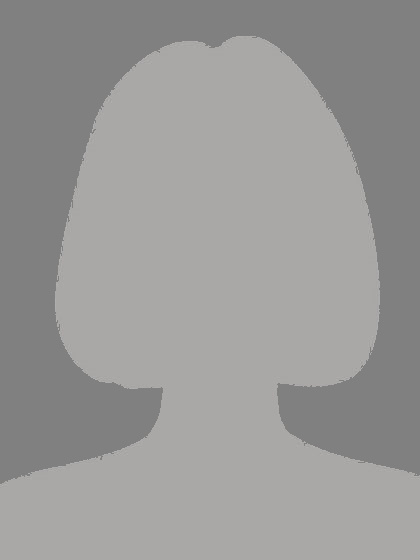Ioanna Kostopoulou
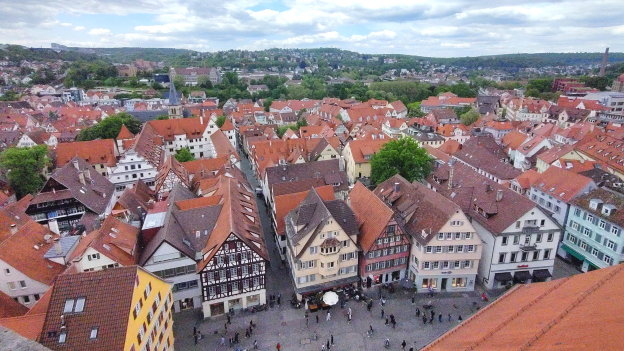 Privat
Privat
Above the rooftops of Tübingen
"I am grateful and indebted to Dr. Maria Trumpf-Lyritzaki and the DAAD-Stiftung for giving me the chance to know the University of Tübingen from so close and to conduct my research there in the last year of my PhD."
Ioanna Kostopoulou, a PhD student in the field of archaeology, was awarded the Maria Trumpf-Lyritzaki Stipendium, which gave her the opportunity to conduct research at the Eberhard Karls University of Tübingen.
Below, she shares her scientific experiences and provides exciting insights into her time in Germany:
In 2019, I started a joint PhD (cotutelle) with the University Gent and Eberhard Karls University of Tübingen. This arrangement is a co-supervision that involves professors from both universities and represents a collaboration between the academic institutions of the two countries.
After a few months in Gent, I had to interrupt my research in Belgium due to the Covid restrictions, and almost two years later, I returned to complete the period of 6 months.
It was at that time that I realized how much I liked living in a small city and conducting research at my own university. While I was searching for a scholarship for the next years of my PhD, I decided to apply for a DAAD grant (Editor's note: Due to her academic orientation and background, Ms. Kostopoulou received a scholarship from the DAAD-Stiftung). It would be the perfect chance to visit my second university for research and to know German culture. Thus, in the fourth year of my PhD, I was given the chance to live in one of the most beautiful cities in Germany and conduct the last stage of my research there. My stay in Tübingen and my experience at the University was one of the best I ever had.
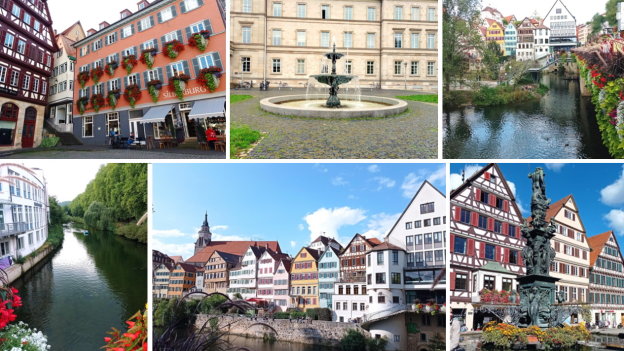
Privat
Tübingen's picturesque corners: A city rich in charm
To begin with the results of my research, my main goal for this year was bibliographic research on the typological and stylistic analysis of all the pottery shapes that appear at Pyla-Kokkinokremos. Through this analysis, I ended up with the dates for the majority of the vessels and I suggested two possible cases about the chronological framework of the prehistoric settlement. In short, the end of Pyla’s existence is confirmed to be around the beginning of the 12th century BCE. However, determining the exact start of the settlement is more complex.
This complexity arises from the presence of only a single architectural level, consisting of one floor. Given these circumstances, one might anticipate the pottery finds to be dated to the second half of the 13th century BCE, suggesting a brief duration.
Nevertheless, it has been demonstrated that more than half of the imported Mycenaean vessels date to the first half of this period, some of which particularly to its beginning. This is quite significant, as Mycenaean pottery is the most precisely datable category on the site.

Privat
Looking back: Ancient clay vessels from Höhentübingen
The presence of these early vessels suggests two possible scenarios: either the settlement was established in the first half of the 13th century (LH IIIB1), with a thorough cleaning of any previous potential floors, or the settlement’s foundation occurred in the second half of the century (LH IIIB2), and the earlier vessels were transported to the hill by the inhabitants as part of their belongings when they relocated there to establish the settlement.
In any case, those vessels (dated to the 1st half of the 13th century) had a prolonged duration, and their special meaning is reflected in their use decades after their production. A completely new conclusion that is shown through this research was the human presence on the plateau since the early stages of the Late Cypriote period (around the 16th century BCE).
This is obvious in the numerous sherds of earlier local wares (White Slip I, Black/Red Slip, White Painted wares, etc.) and contributes to the discussion about the reasons for the foundation of the main occupation in the 13th century. It is conceivable that these reasons are tied to the strategic location of the port and the likely origin of the settlers, who probably originated from the surrounding villages.Lastly, the level and the type of connections of the site with mainland Greece, Crete, the Levant, Egypt, Sardinia, and Asia Minor are highlighted through the standardized typology from each region.
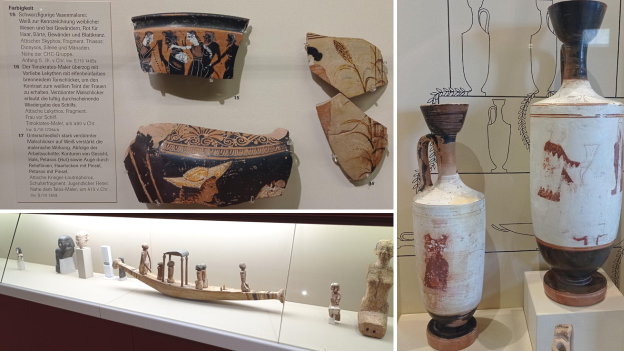
Privat
Fragments of history: vases and vessels as witnesses to ancient cultures
The case is characteristic of the pottery from Crete and the Levant, which consists of exclusively transportation/storage vessels, while the imported Mycenaean vessels additionally include tableware that was exported to Cyprus for its own sake (e.g., bowls for consumption).
Turning to my university, I had a great time at my libraries. The main library with my personal desk was in the old city castle, which has a long history since the Medieval years. The castle houses an archaeological museum and offers a wonderful view, and thus it was a real pleasure for an archaeologist to work there.
The rest of the libraries, like the Theologicum and the Main Building, were spread in the city, and although I was not used to walking around a city to find my books, I would say that I enjoyed it in the end, as it was a good chance for me to see more libraries and to get involved with more people.
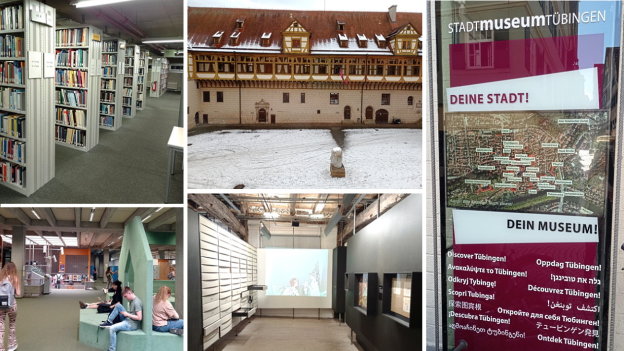
Privat
Trails of knowledge: libraries and museums in Tübingen
Concerning my next steps, I intend to continue with research and a post-doctoral degree after the end of my PhD in Spring 2024. In parallel, I will proceed with the publication of my thesis.
During this year, I also had the pleasure of participating in a colloquium where I discussed the subject of my thesis and shared my academic experience with other researchers and professors of my department. I met people with whom I talked about my interests and thoughts about archaeology and methodological approaches.
From a more personal perspective, I had the opportunity to visit some festivals in my city, like the Chocolate and Christmas festivals in November and December, and the city festival in July, and to meet people from different countries through the university events. I must say that German festivals tend to be much longer than the Greek ones, spanning several weeks. They typically feature traditional German food and beer, while Greek festivals often offer traditional Greek cuisine and drinks. Even though beer is not my favorite drink, I must admit that I really enjoyed the dish of Spätzle from German cuisine.
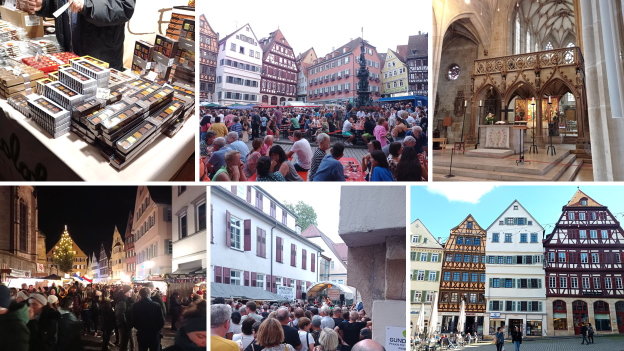
Privat
Festive days in Tübingen: the city festival in July and winter lights at the Christmas market
As a Greek who has lived in Athens for many years, it was amazing to live in a small city like Tübingen and to admire from close the beautiful Catholic churches and the old-style architecture of the buildings. The calmness of the city pulled me out for walking in the city center and the parks. Outdoor activities are much more common in Germany, as well as the use of bikes. Although this didn’t change my habits regarding public transportation, I found it interesting, especially because I believe that fewer cars in the city can make a difference.
Another aspect I noticed is the difference in trash and recycling management between the two countries. The German system resembles the one I experienced a few years ago in Ghent and is much more effective in helping you reduce waste.
An experience that will stay in my memory for years was the visit of my sister, who loved my city as well. My sister and I visited the monastery and palace of Bebenhausen, and the cities of Heidelberg and Stuttgart, and we were both impressed, especially by the museums.
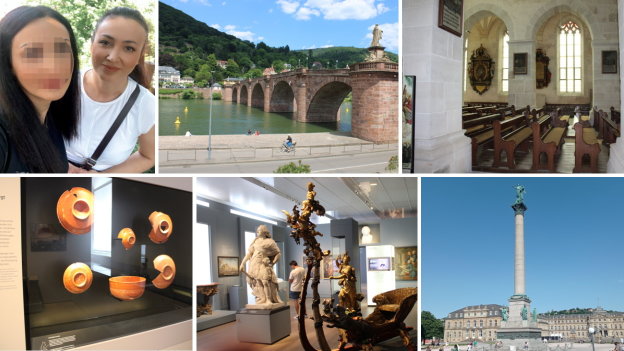
Privat
Sisters on a journey of discovery. from Tübingen's charm to Heidelberg's romance and Stuttgart's dynamism
Aside from the beauty of my city, what I keep from this year in Germany is that it made me feel strong and intrepid in trying new experiences, routines, and the independence of living alone while managing my responsibilities. This, I believe, will help me as an archaeologist to keep me active in research.
I certainly wish I had more time in my city or even stayed there as a permanent place to live. Walking in the streets of my neighborhood in the mornings is something I already miss. Having this thought, I will always be indebted personally to Dr. Maria Trumpf-Lyritzaki for offering this year in Tübingen to me, as it is more than an experience for research, but life memories. I would like to close this report by sharing my appreciation to Dr. Maria Trumpf-Lyritzaki and the DAAD-Stiftung.
Stand: As of September 2023.

